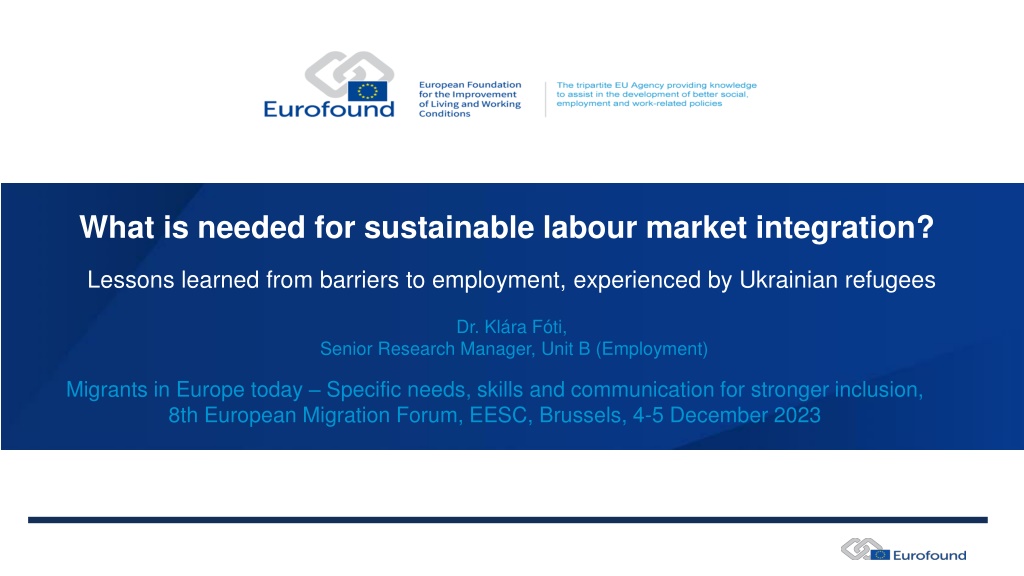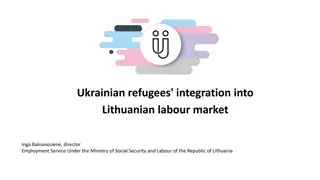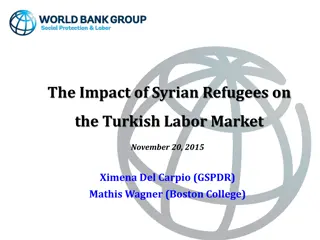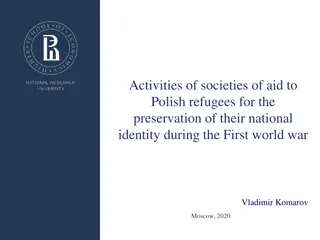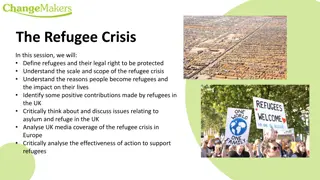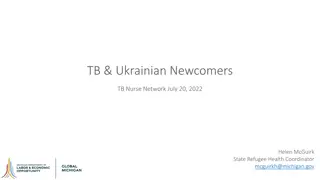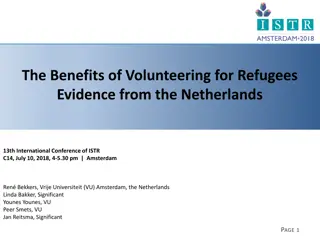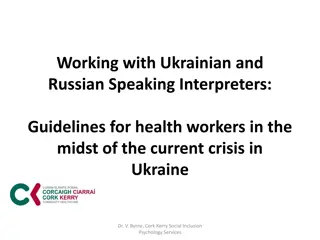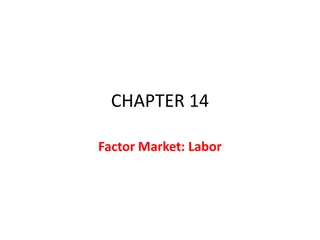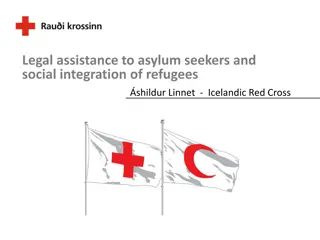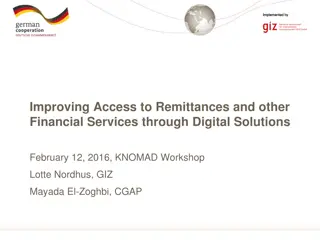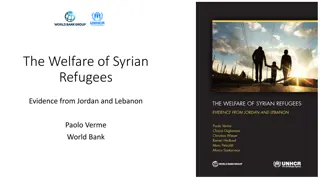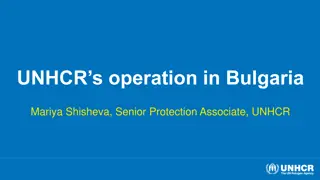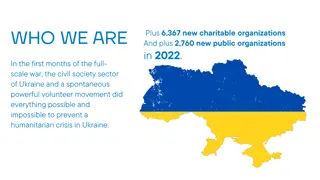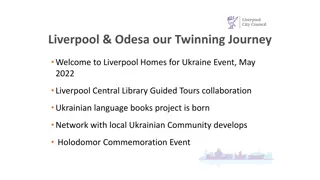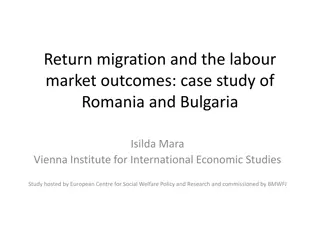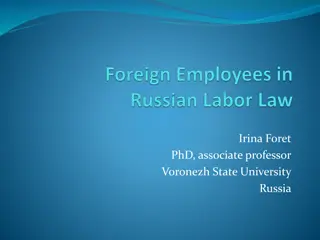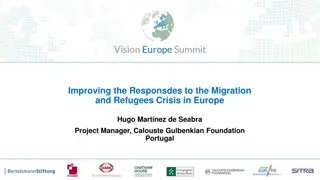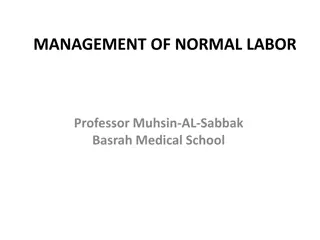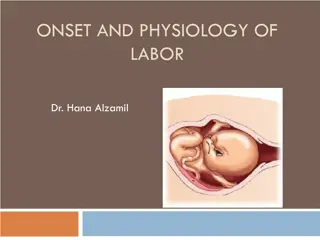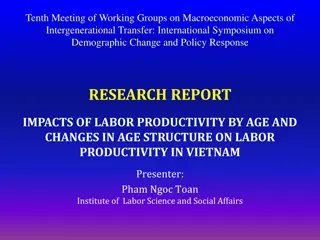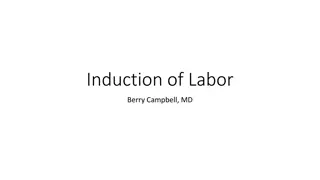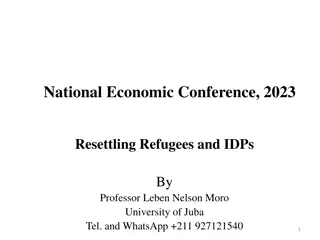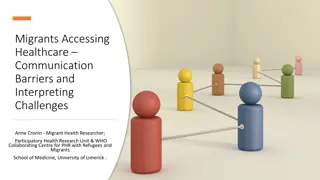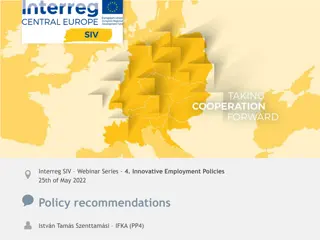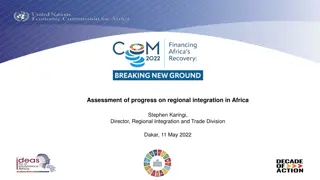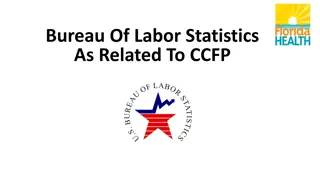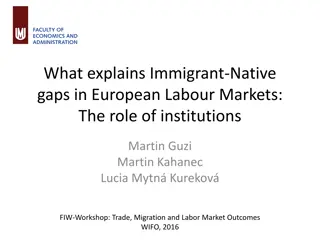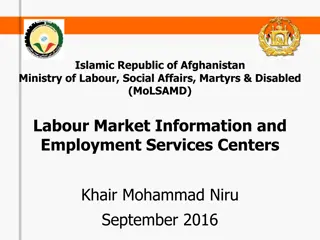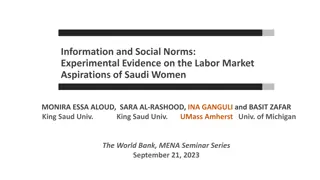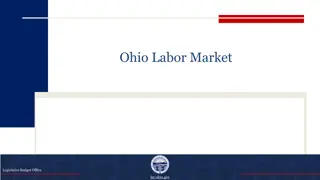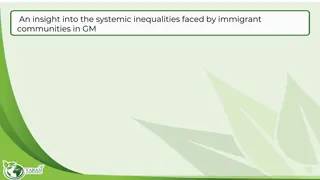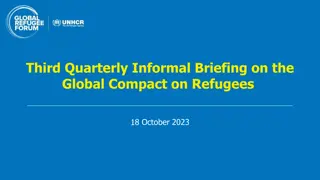Challenges Faced by Ukrainian Refugees in Labor Market Integration
Dr. Klára Füti discusses the barriers to employment experienced by Ukrainian refugees in Europe at the 8th European Migration Forum. The survey conducted by the European Fundamental Rights Agency highlights key findings on employment barriers and the preliminary outcomes of integrating Ukrainian refugees. The job search, employment status, and reasons for unemployment among Ukrainian refugees are analyzed, emphasizing language barriers, family responsibilities, and health issues as significant hindrances to sustainable labor market integration.
Download Presentation

Please find below an Image/Link to download the presentation.
The content on the website is provided AS IS for your information and personal use only. It may not be sold, licensed, or shared on other websites without obtaining consent from the author. Download presentation by click this link. If you encounter any issues during the download, it is possible that the publisher has removed the file from their server.
E N D
Presentation Transcript
What is needed for sustainable labour market integration? Lessons learned from barriers to employment, experienced by Ukrainian refugees Dr. Kl ra F ti, Senior Research Manager, Unit B (Employment) Migrants in Europe today Specific needs, skills and communication for stronger inclusion, 8th European Migration Forum, EESC, Brussels, 4-5 December 2023
Outline Key findings of Eurofound s analysis of a survey, conducted by the European Fundamental Rights Agency (FRA), focusing on the barriers to employment Preliminary findings of Eurofound s research project on Addressing the challenges of receiving and integrating Ukrainian Refugees
About the survey The survey was carried out between 22ndof August and 29thof September 2022 among displaced persons from Ukraine It covered 10 countries: those, which either shared a land border with Ukraine (Hungary, Poland, Romania, Slovakia), or had the highest absolute numbers of people displaced from Ukraine (Bulgaria, Czechia, Germany, Italy and Spain), or had a large population of people displaced from Ukraine relative to their own total population (Estonia) The aim was to collect the experiences and views of displaced people since leaving Ukraine, in the areas covered by the Temporary Protection Directive (TPD): reception in the EU countries, access to work, education, housing, health and crossing borders Our focus: analysis on access to employment, and the main barriers the refugees had to face
Job search, in paid work, and reasons for out of work Most Ukrainian refugees are keen to access the labour market almost two thirds of the adults (+18), i.e. 62% have been actively seeking a job since their arrival. A majority of them, 66% have been in employment since leaving Ukraine. However, at time of the survey, only 47% of the job-seekers were in paid work. This points to the temporary nature of many of the jobs Ukrainian refugees have. Among those who are out of work, besides lack of language knowledge, 37% indicated family responsibility as a reason for not working. A relatively high share, 15% reported having physical or mental health issue why they are out of work Job search since arrival 120% 100% 80% 53% 60% 80% 40% 47% 20% 20% 0% Yes No Currently in paid work Currently not in paid work Reason for not in job 54% 60% 50% 37% 40% 30% 15% 14% 14% 20% 10% 0% No jobs No sufficient language knowledge Having family responsibility Difficult due to physical or mental health issues I don t know how to find a job
Barrier to employment, experienced during job search Lack of sufficient language knowledge- almost two thirds (63%). Only find irregular work about a quarter (23%) Don t know where to go/whom to contact (21%) Felt discriminated the lowest (10%) 80% 63% 60% 40% 23% 22% 21% 20% 16% 15% 10% 0% Lack of sufficient language knowledge Only find irregular work Other problems Don't know where to go / whom to contact Qualification not recognised Too much bureaucracy Felt discriminated
Addressing the challenges of receiving and integrating Ukrainian refugees Objective: to focus on the challenges the Member States and Norway must face when receiving and integrating Ukrainian refugees, who fled from the war against their country. Five areas are investigated, which are crucial for the refugees for settling in: Labour market access Housing Education: Early Childhood Education and Care (ECEC) and compulsory schooling Healthcare (including mental health services) Social assistance It is based on qualitative information, provided by Eurofound s correspondents (NEC)
Preliminary findings employment level and more barriers This research confirmed (found also by other studies) that Ukrainian refugees labour market integration, if measured by their employment rate, can be regarded a success, especially in comparison with other refugee groups. The rate ranges from more than 10% to more than 40% (in some countries well above that, reaching even 50% or higher), and its increase seems to continue. Estimates for employment rates in selected countries Around 10% IT h About 15% Fl, FR a, RO d Around 20% AT f, DE, LU, PT i Around 30% DK a, SK ab, Close to 40% or above CZ c, EE, LV, LT, IE e, NL, PL g, SE Source: NEC-contributions There are, however, several barriers to employment - besides language barrier, lack of information, and of social network, available job opportunities, lengthy and complicated recognition of qualification procedures, absence of accessible childcare, especiallyin remote areas and capacity problems in compulsory schools.
Towards a more sustainable labour market integration? (Lessons learned: Opportunities and limitations, based on measures for Ukrainian refugees) A more active role of the Public Employment Services in job matching (through e.g.online portals with built-in matching systems PL, or directly inviting employers to hire Ukrainians for vacant positions - LT) Simplifying and shortening the recognition of qualifications procedure (LT, SK, PL) labour shortages in certain professions (teachers, medical professionals, etc., as important driver for this Relaxation of certain labour market restrictions (such as language requirements, LT, LV) Bridging training programmes (similar to fast-track measures, introduced in Sweden in the wake of the inflow of refugees in 2015/2016) Example: Combined training in Estonia for nurses qualified in Ukraine, to bridge the qualification gap These and similar measures, however, could be applied for other refugee groups with some limitations
Thank you for your attention! Publications: Barriers to employment of displacedUkrainians | European Foundation for the Improvement of Living and Working Conditions (europa.eu) Authors: Klara.Foti@eurofound.europa.eu; Michele.Consolini@eurofound.europa.eu Marta.Anzillotti@eurofound.europa.eu Forthcoming: Social impact of migration: Addressing the challenges of receiving and integrating Ukrainian refugees | European Foundation for the Improvement of Living and Working Conditions (europa.eu)i
